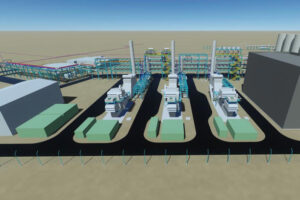UK must ‘repower’ wind turbines to hit carbon targets
The UK will need to replace its old onshore wind turbines if it is to ensure enough low-cost power capacity to achieve its carbon targets, a new report has found.
Over eight gigawatts (GW) of onshore wind are set to be retired in the next ten years, amounting to almost a fifth of the UK’s renewable energy output, the report by RenewableUK concluded.
The renewable energy trade association has warned that new policies are needed to replace or ‘repower’ these older wind farms if the UK is to continue progressing towards cleaner energy.
Emma Pinchbeck, RenewableUK’s deputy chief executive, said: ‘Without new policies from government we risk losing huge amounts of renewable energy, so repowering onshore wind is critical to cutting our carbon emissions and closing the looming energy gap.
‘Upgrading our infrastructure with modern onshore turbines is good for consumers, as onshore wind is the cheapest form of new electricity available, and brings investment to communities around the UK.’
The UK’s first commercial wind farms were developed in the 1990s and were only designed to operate for around 20-25 years, meaning they are now entering the end of their expected lifespan.
If the government fails to support repowering wind turbine sites, the UK risks growing its current low-energy electricity generation gap – already set to be up to 18% of the total electricity demand by 2030, according to its Committee on Climate Change (CCC).
Installing new, more powerful turbines on existing wind farm sites could allow the UK to maintain its current energy output and lower the number of turbines required, said RenewableUK’s report, titled Onshore Wind: The UK’s Next Generation.
The report also suggested options such as upgrading turbines that are still operating, or allowing existing turbines for longer than had originally been planned.
Renewable Energy have speculated that the amount of new onshore wind capacity the UK could install could be as high as 12GW or as low as 2.76GW, depending on which planning applications are successful and the size of the turbines being used.
The association has called on government to commit to maintain the current capacity of onshore wind farms by granting permission for repowering where appropriate, which would also bring the UK up to speed with technology now being used in mainland Europe.
Pinchbeck added: “This should be an easy win on climate change that cuts emissions and secures cheap power for consumers.
‘The public mood is for more urgent action to tackle climate change and this is a concrete example of where government can act to avoid backsliding on progress against our carbon reduction targets.
‘We need to see positive policies in place that will keep Britain powered up with clean, affordable electricity.’
The warning comes after government figures earlier this month suggested that the UK is set to fall further behind in meeting its carbon targets.
The Committee on Climate Change is predicted to publish advice later this month on tightening the UK’s carbon reduction targets further.
Photo © Oast House Archive (cc-by-sa/2.0)
















So are you saying that wind turbines aren’t sustainable or renewable after all? They’re just another consumer disposable that needs replacement every few years, depleting more and more of the world’s resources, using more and more natural space.
All in all, wind turbines are worse for the environment than fossil fuels. Over 8,000 wind turbines can’t even generate as much energy as only 15 nuclear power stations.